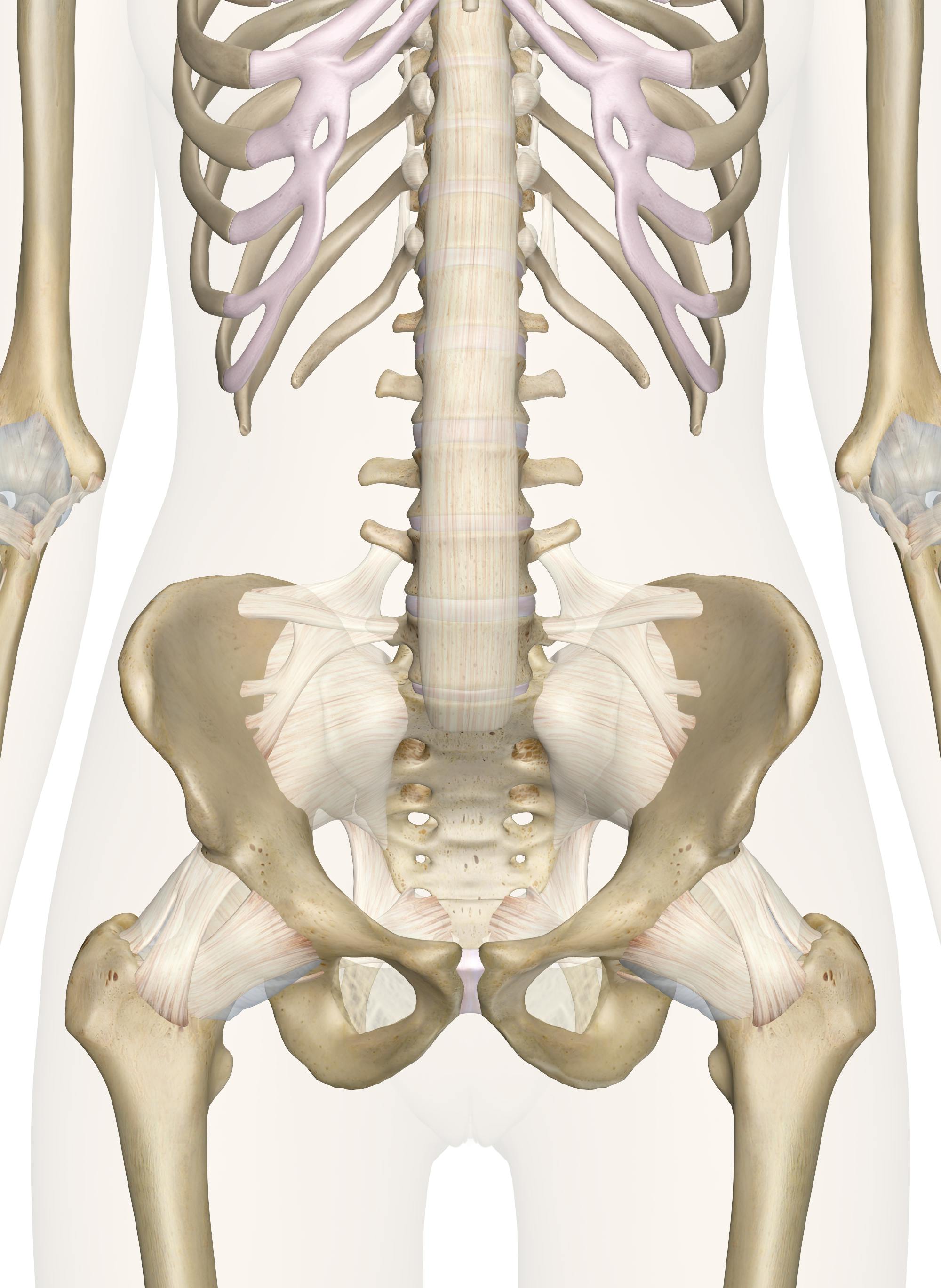The bones of the pelvis and lower back work together to support the body’s weight, anchor the abdominal and hip muscles, and protect the delicate vital organs of the vertebral and abdominopelvic cavities.
The vertebral column of the lower back includes the five lumbar vertebrae, the sacrum, and the coccyx. These bones work together to provide flexibility to the trunk, support the muscles of the trunk, and protect the spinal cord and spinal nerves of the back.mycontentbreak Lumbar vertebrae support much more body weight than the other vertebrae in the body and are therefore the largest and most robust vertebrae in the body. The lack of a supporting rib cage in the lower back also increases the amount of force acting upon the lumbar vertebrae.
The sacrum and coccyx form the inferior end of the vertebral column where it meets the hip bones to form the pelvis. The triangular sacrum forms joints between the lumbar vertebrae and the hip bones. It also contains many passages for the spinal nerves that exit the spinal cord and spread through the pelvis and legs. The coccyx, or tailbone, is inferior to the sacrum and made of several tiny, fused vertebrae. Several pelvic muscles attach to the coccyx.
A pair of large, flat bones known as the os coxae, or hip bones, extend anteriorly and laterally from the sacrum at the sacroiliac joints to form the bulk of the pelvis. The left and right hip bones meet anteriorly at the body’s midline in a band of fibrocartilage known as the pubic symphysis (or symphysis pubis). The hip bones also form the ball-and-socket hip joints with the femurs. Many muscles that move the trunk and legs, such as our abdominal muscles, attach to the hip bones. In addition, the broad hip bones provide protection to the delicate internal organs of the pelvis, such as the intestines, urinary bladder, and uterus.
There are many structural differences between the male and the female pelvis, most of which reflect the role of childbirth in the female. The male pelvis is smaller and narrower with a thinner pubic symphysis. The female, on the other hand, has a much wider and more prominent pelvis that provides extra interior space with a wider, more flexible pubic symphysis.

